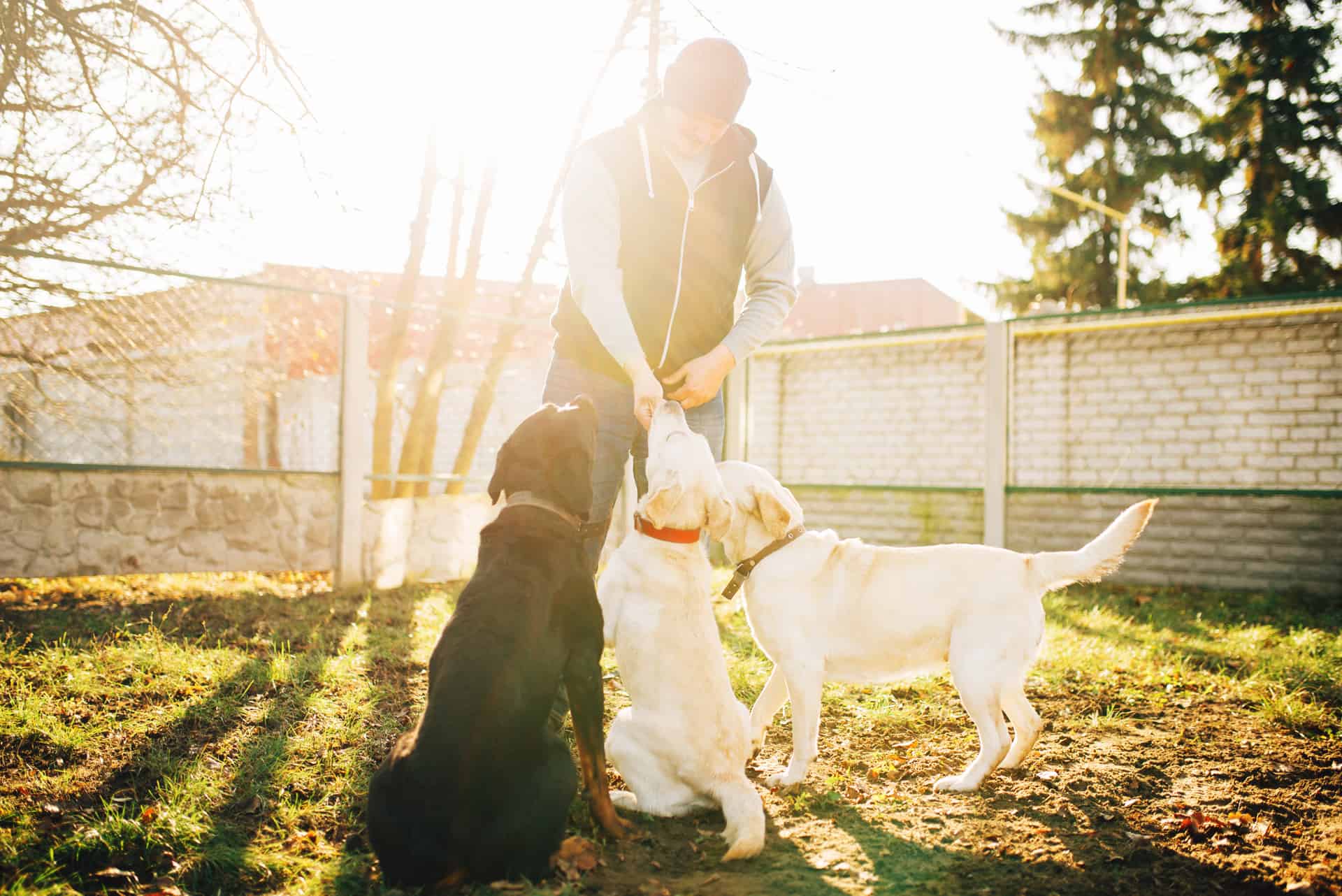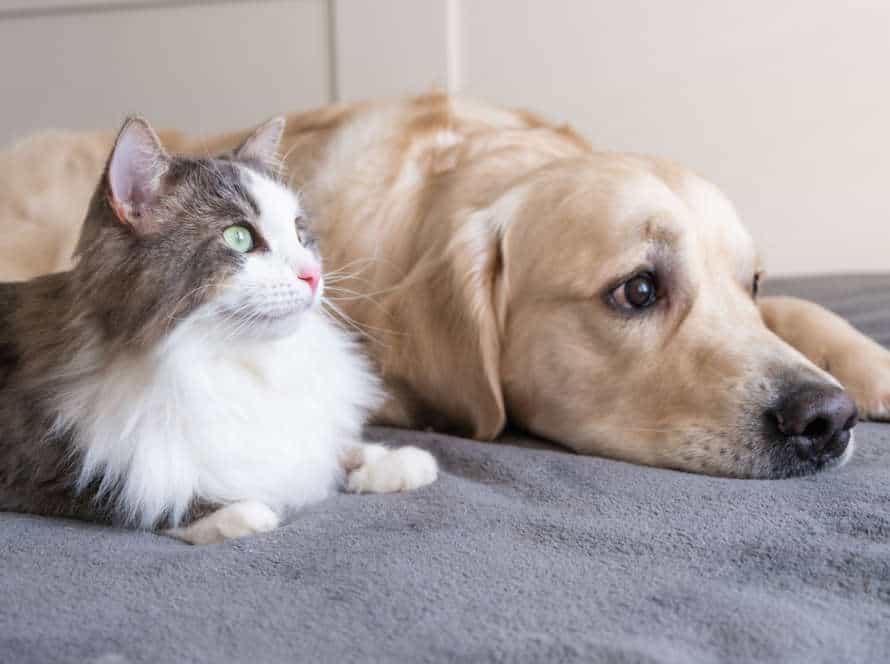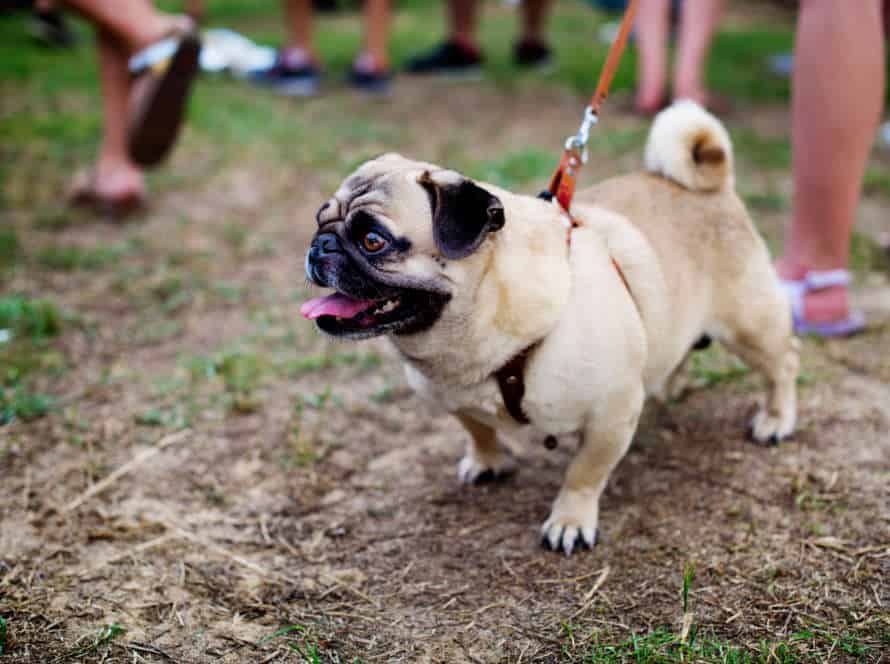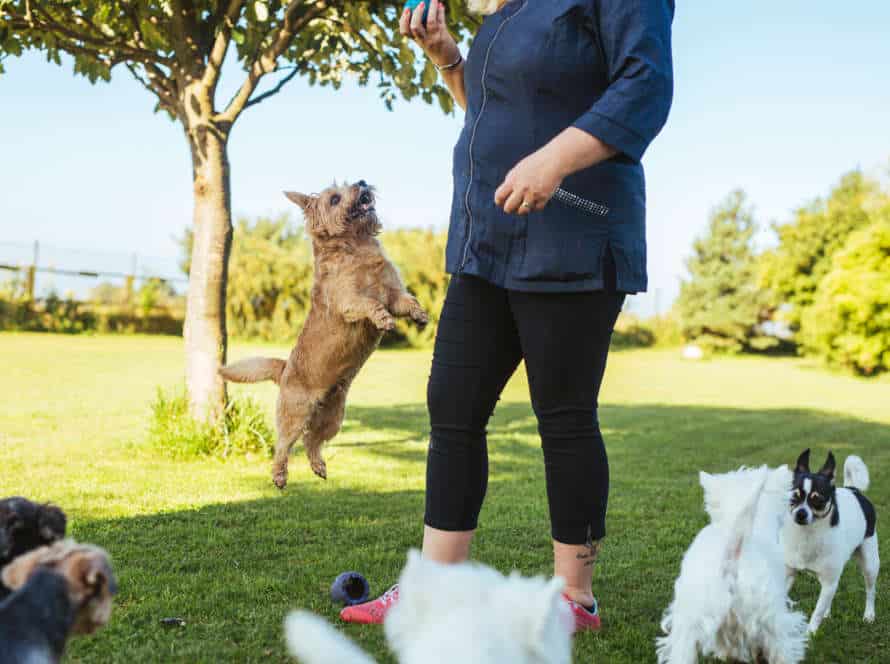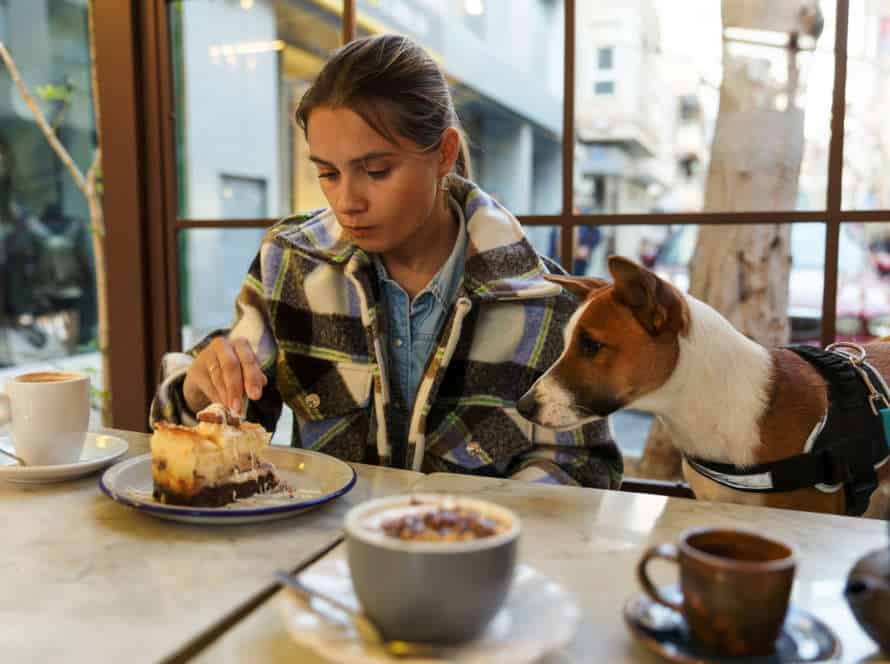Understanding Multi-Dog Behavior
Multiple dogs in a home can be tricky. Knowing how to handle the behavior of multiple dogs is key to teaching them right. Let’s explore the differences between single and multi-dog households. We’ll also look at the training issues that come with raising many furry friends.
Understanding Pack Dynamics
Comprehending pack dynamics is imperative for multi-dog households. Every pack has its own hierarchy. To take on typical training issues, it’s key to understand how it operates.
Here are some tips to understand pack dynamics:
- Monitor your dogs – Check how your dogs behave around each other. See who is in charge, who follows, and who just puts up with it.
- Identify body language – Learn to interpret your dogs’ body language to understand their feelings and aims.
- Refrain from interfering – Only intervene when the dogs’ interactions become hostile or violent. Otherwise, let them work out minor quarrels themselves.
- Train each canine one at a time – Every dog in a multi-dog household must get individual training and focus to keep away from competition.
Comprehending pack dynamics will bring balance to your multi-dog household and create a peaceful and healthy atmosphere for your furry mates.
Identifying the Alpha Dog
Figuring out who’s the alpha dog in your multi-dog house is essential to solving common training issues. Here’s a few things to look out for:
- Alpha dogs are the most confident and sure of themselves.
- They start playing first, and never give up.
- They have a strong body language and often make eye contact with the other dogs.
- The rest of the pack usually gives in to the alpha dog.
Once you know who’s the alpha dog, it’s important to be the pack leader by giving consistent and fair training. This will stop any power struggles, and make sure everyone’s living in harmony.
Recognizing Territoriality and Resource Guarding
Territoriality and resource guarding are behaviors seen in multi-dog households. These can lead to aggression. It’s important to recognize these behaviors.
Territoriality means a dog defends its space, like a home or bed. Resource guarding is when a dog controls access to things like food, toys, or attention.
Signs of these behaviors are growling, snapping, or biting when another dog comes near or tries to take something. To fix these issues, train the dogs to obey, teach them to share resources, and give each dog its own space and resources.
Common Training Challenges in Multi-Dog Households
Training many pooches can be a struggle for any pet parent. They often get sidetracked and don’t know what to do. This makes teaching them new tricks hard. Worse, if one pup learns something, the others may not, leading to a mix of different reactions. Luckily, there are ways to make it easier. In this article, we’ll explore the most common problems with multi-dog training and how to solve them.
Separation Anxiety and Trauma from Past Experiences
It’s common for multiple-dog households to face training issues due to separation anxiety or past traumatic experiences.
Such anxiety can be caused by owners being away, while traumas may lead to aggression and fear towards other dogs.
To help with these issues, pet owners should:
- Slowly increase time spent away to reduce separation stress.
- Give each dog a separate area, like a crate, bed or room, to avoid overstimulation and aggression.
- Use positive reinforcement, like treats and compliments, to reward calm and cooperative behavior.
- Ask for help from a pro dog trainer if needed, especially for past traumas.
By doing so, dogs will feel safe and content in a multi-dog household, resulting in better relationships and well-being.
Difficulty in Reinforcing Positive Behaviors
Tackling the challenge of training multiple dogs can be tricky! Here’s how to reinforce good behavior:
- Have individual sessions for each pup to focus on positive reinforcement.
- Use treats, verbal praise, and toys to reward the good and discourage the bad.
- Create a calm and relaxed environment for all your dogs.
- Exercise your pups often to reduce energy that could lead to bad behavior.
By consistently using these tips, you’ll strengthen the bond with your furry friends and reinforce good behavior in a multi-dog household.
Aggression and Fighting Between Dogs
Aggression and fighting between dogs is a common problem in multi-dog households. It’s crucial to understand why it’s happening to address it correctly. Here are some tips:
- Identify the cause of aggression. Dogs may protect resources, claim territory, or want dominance. Find the root cause.
- Train each dog separately. Give each one individual training and the same amount of attention and affection.
- Gradually introduce new dogs. Let them adjust gradually to the presence of others.
- Seek professional help. If the aggression persists, get help from an expert.
Remember, each dog needs individual attention and care. Being aware of body language, behaviour, and triggers can help prevent aggression.
Pro tip: Patience, consistency, and sensitivity are key when tackling aggression between dogs.
Proactive Training Approaches
Training multiple pups in the same home? That can be tricky!
To deal with these challenges, you must be proactive. Plan ahead and take the right steps. Then, you’ll make sure each pup gets the training and attention they need. Let’s take a closer look at some proactive training approaches for tackling the common issues that can arise in multi-dog households.
Consistency in Training
Consistency is a must when training multiple dogs in the same home. Proactive training is important for tackling common issues. Here’s what to do for consistency:
- Set clear rules and boundaries for all dogs.
- Use the same commands for all dogs – make sure everyone does the same.
- Train each dog individually before training them together.
- Be consistent and patient.
- Immediately reward good behavior with treats, praise or toys.
Follow these tips and your dogs will coexist happily. If you need help, hire a professional dog trainer to tailor solutions to your needs.
Positive Reinforcement Techniques
Positive reinforcement is a powerful and effective way to train multiple dogs in your household. Here are some proactive approaches to help you:
- Train each one separately first.
- Use treats, toys and verbal praise to reward good behavior.
- Develop a routine with the same commands, rewards and consequences for each dog.
- Approach training sessions with a positive attitude and patience.
- Manage the environment – limit distractions and maximize focus.
Training multiple dogs can be tricky, but with positive reinforcement, consistency and patience, you can conquer common obstacles and help your pooches succeed.
Identifying and Addressing Negative Behaviors Early
It’s key to spot and tackle bad behaviors quickly in multi-dog households. Proactive training can help with common issues.
Take these steps:
- Observe your pooches often.
- Pinpoint any negative behavior, such as aggression, guarding resources, or yapping.
- Use positive reinforcement techniques to address it early.
- Be consistent and make sure everyone in the house follows the same plan.
- If needed, use baby gates/crates to keep bad behavior from getting worse.
- If the problem persists despite your best efforts, seek help from a pro.
By being proactive, training your pup, and getting help when needed, you can keep a happy and peaceful home for multiple doggos.
Practical Tips for Training Multiple Dogs
Training multiple pooches can be tough! To succeed, you need to be consistent and have a plan. Challenges can pop up though – like how to divide attention and decide the best techniques for each pup. Here’s some tips to help you tackle training with multiple dogs:
Train Each Dog Separately First
Training each dog one-by-one is a must when training multiple dogs. Here’s why:
- Giving each pup individual attention is difficult when you’re trying to train two or more.
- By training each dog separately first, you can set a strong base of commands and techniques before you try to train them together.
- This way, you can address any individual issues, without confusing the others.
- Once each dog has had their own training, you can incorporate group sessions that reinforce the commands they learned.
Pro tip: Patience and consistency are key. Training more than one dog can take longer, so make sure to give plenty of praise and keep sessions short and enjoyable.
Use Commands That Differentiate Each Dog
When training more than one dog, it is important to use commands that set them apart from each other. To make sure the communication is effective, here are some tips:
- Always say the dog’s name before giving a command. Eg. “Buddy, sit” and “Rocky, stay”.
- Pick different words for each dog’s commands. For example, one dog can have “come” while the other has “arrive“.
- Use visual signs. Pointing or hand signals are great for reinforcing the commands.
Using special commands for every pup can minimize rivalry and help promote good behavior.
Create Separate Spaces for Each Dog
Creating a special spot for each pup is a must for successful training and a peaceful multiple-dog home. Here are some tips to ponder:
- Give each pooch their own area in the house, which includes a special crate, bed, and feeding station.
- Don’t give the dogs their meals together, or it could lead to fights – feed them in their own space instead.
- Train each pup separately before getting them to work together.
- Keep an eye on the dogs at all times to make sure they don’t get too aggressive or territorial.
- Give each dog their own toys and plenty of exercise to help them work off energy.
With time, perseverance, and consistency, your doggos will be able to live happily and peacefully in your many-dog home.
Addressing Aggression and Fighting Between Dogs
Dog owners with multiple pups have a big challenge – aggression and fighting! This can be incredibly annoying and unsafe. To ensure everyone’s safety and address the issue, it’s essential to understand why the dogs are battling and use training to reduce the aggression.
Separating the Dogs During Confrontations
It is key to separate dogs during confrontations, so serious injuries can be prevented and aggression/fighting in multi-dog households can be handled.
Here are some tips for safe separation:
- Don’t use hands to pull dogs apart. Distract them with loud noise, water or compressed air. Use the distraction to push them apart.
- Use physical barriers like baby gates, doors, or crates to quickly separate them.
- The best way to keep peace in a multi-dog household is to prevent escalations. Train and supervise your dogs, give each dog their own resources, and avoid putting them into conflictual situations.
- If there’s severe aggression, it’s best to find a professional dog trainer.
Identifying the Trigger and Addressing it
It’s key to spot the cause of aggression and fighting between dogs. To do this, keep these tips in mind:
- Notice signs like growling, barking and snarling.
- Look at the body language to find the trigger – food, toys, space, or attention.
- Take the dogs apart and remove the trigger.
- Teach the dogs with positive reinforcement techniques and reward good behavior.
- Reintroduce the trigger slowly, and reward good behavior, correcting bad behavior.
It’s essential to remember that aggression and fighting between dogs is dangerous, so consult a professional dog trainer or animal behaviorist if the behavior continues.
Seeking Professional Help if Necessary
Dealing with aggressive and fighting dogs in a multi-dog household can be tough. Professional help is a must to resolve the issue.
Signs that you need help include:
- Injuries or medical attention caused by aggression
- Frequent or unpredictable fighting
- Aggression that spreads beyond the home to other animals/people
- Training techniques that don’t control aggressive behavior.
A certified dog trainer can help identify the root cause of the aggression and create a plan. Don’t wait to get help – the sooner the better!
Tip – Socializing and positive training can prevent aggression and fights in a multi-dog household.
Frequently Asked Questions
1. What are some common training challenges faced in multi-dog households?
A: Some common challenges include aggression towards other dogs, food/resource guarding, separation anxiety, and difficulty with recall commands.
2. Can all dogs in a multi-dog household be trained together?
A: It depends on the individual dogs and their personalities. Some dogs may thrive in a group setting, while others may do better with individual training sessions.
3. How can I prevent fights between my dogs?
A: Providing plenty of exercise, establishing a clear hierarchy, and practicing supervised playtime are all effective ways to prevent fights between dogs.
4. My dogs bark excessively. How can I train them to stop?
A: Excessive barking can be addressed through positive reinforcement training, desensitization techniques, and providing mental and physical stimulation to prevent boredom.
5. Can I train my dogs to walk on a leash together?
A: Yes, but it is important to train each dog individually before attempting to walk them together. This ensures that each dog understands leash manners and can be controlled in a public setting.
6. How long does it typically take to train dogs in a multi-dog household?
A: The length of time varies based on the specific training goals and the individual dogs’ personalities, but consistency and patience are key in achieving success.

